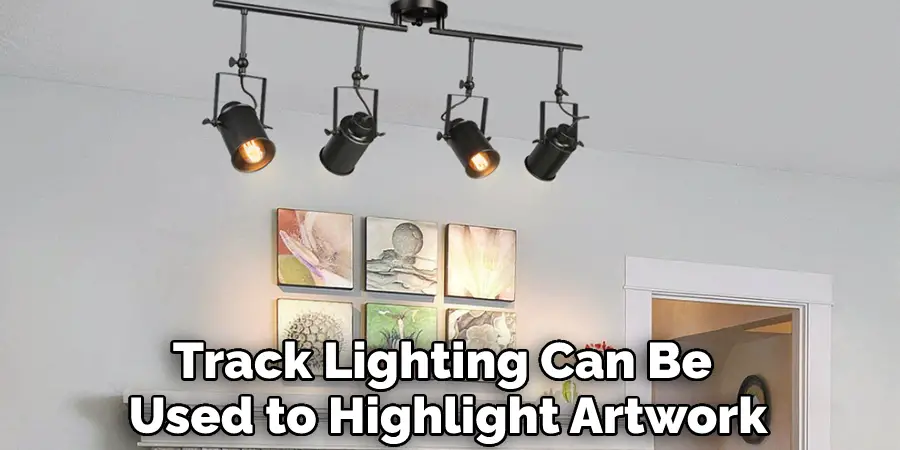When you think about adding lighting to a room, the first thing that comes to mind is probably overhead lights. However, other options are available that can be just as effective – and sometimes even more functional – than overhead lighting. In this post, we’ll explore some of these alternative lighting sources and show you how to add lighting to a room without overhead lights. Keep reading to learn more.
Summary: Adding light to a room without overhead lights can be a challenge, but with a little creativity, you can achieve the perfect lighting for your space. Try using natural light sources, such as windows or lamps, to create a more inviting atmosphere. Alternatively, try using artificial light sources, such as fluorescent lamps or LED lights, to create an industrial or modern look. Whatever lighting solution you choose, make sure to take into account the surrounding environment and your personal preferences to create the perfect ambiance for your home.

What Causes Room Lighting to Appear Dark?
There are a few reasons your room might appear dark, even with overhead lighting. One common reason is that the lightbulbs you’re using are too low wattage for the room size. For example, if your lightbulbs are only 60 watts, they might not be bright enough to light a large room fully. Another reason could be that your overhead lights are covered by shades or curtains, preventing some of the light from shining through.
In addition, the way your room is laid out can affect how much light reaches different areas. For example, if you have a lot of furniture in the room, this can block some of the light and make the room appear darker. Additionally, the color of your walls can also affect how much light is reflected back into the room. Darker colors tend to absorb more light than lighter colors, which can make a room appear darker.
The other major factor affecting a room’s light is the windows. If your room has a lot of windows, the natural light coming in can make the room appear brighter. However, if shades or curtains cover your windows, this can reduce the amount of light coming into the room and make it appear darker. Lastly, the time of day can also affect how light or dark a room appears.
Why Is It Important to Add Lighting to a Room Without Overhead Lights?
There are a few reasons you might want to add lighting to a room without overhead lights. One reason is that alternative lighting sources can provide more targeted light. For example, if you’re trying to read in your room, overhead lights can create a glare on the page and make it difficult to see. However, if you have a lamp near your reading chair, the light will be more focused and won’t create a glare.
In addition, alternative lighting sources can be more aesthetically pleasing than overhead lights. If you want to create a more relaxing or romantic atmosphere in your room, overhead lights can be too harsh. Another reason to add lighting to a room without overhead lights is that it can be more energy-efficient. Finally, adding lighting to a room without overhead lights can help reduce your carbon footprint.

Some Easy Ways How to Add lighting to a Room Without Overhead Lights
1. Use Table Lamps
Table lamps are a great way to add lighting to a room without overhead lights. They can provide focused light for reading or other tasks and come in a wide range of styles to match your room’s decor. Table lamps can be placed on a side table, dresser, or any other surface. To create a cohesive look, try to match the style of your table lamps to your overhead lights.
If you don’t have overhead lights, you can also buy floor lamps and place them next to a table or chair. Avoid placing lamps in high-traffic areas to prevent them from being knocked over.
2. Use Wall Sconces
Wall sconces are another great way to add lighting to a room without overhead lights. They can be placed at different heights on the wall to create a more customized look. Wall sconces are also great for adding task lighting to a room. To add wall sconces to a room, first mark the placement of the sconces on the wall. Then, use a drill to make pilot holes for the screws.
Next, insert the screws into the pilot holes and secure the wall sconces to the wall. Finally, add the light bulbs and turn on the power. Avoid using fluorescent bulbs in wall sconces as they can cause flickering.
3. Use Floor Lamps
Floor lamps are a great alternative to table lamps and can provide focused light for reading or other tasks. They come in a wide range of styles, so you’re sure to find one that fits your room’s décor. To use a floor lamp in your room, first, find a spot for it. Avoid putting it in a high-traffic area where it may get knocked over.
Once you’ve found the perfect spot, plug it in and turn it on. Avoid putting the light bulb too close to your furniture or curtains to prevent fires.
4. Use String Lights
String lights are a popular way to add lighting to a room without overhead lights. They can be hung from the ceiling, around a doorframe, or along the wall. String lights come in a variety of colors and can be used to create a festive atmosphere. To ensure that your string lights are safe to use, purchase them from a reputable source and follow the manufacturer’s instructions.

To avoid tripping, be sure to secure the string of lights so that they are not hanging loose. If you use battery-operated string lights, check the batteries regularly and replace them as needed.
5. Use LED Lights
LED lights are a great alternative to traditional light bulbs. They use less energy and last longer than traditional light bulbs. LED lights come in various colors and can be used to create different lighting effects in a room. You can buy LED lights at most hardware stores. You will need to purchase an LED light fixture to install LED lights. First, determine where you want to place the LED light fixture.
Second, follow the instructions that come with the LED light fixture to install it. Third, connect the LED light fixture to an electrical outlet. Finally, turn on the LED light fixture and enjoy the new lighting in your room!
6. Use Solar Lights
Solar lights are a great way to add lighting to a room without using electricity. Solar lights are powered by the sun and can be placed anywhere in your home that gets direct sunlight. Solar lights can be used to light up walkways, accentuate gardens, or add extra light to a room without overhead lights.
To get the most out of solar lights, be sure to place them in an area where they will get direct sunlight for at least six hours a day.
Avoid placing solar lights in an area that is shaded by trees or buildings, as this will limit their ability to charge properly.
7. Use Track Lighting
Track lighting is a type of lighting that uses a system of tracks to mount the light fixtures. Track lighting is a great way to add accent lighting to a room without overhead lights. Track lighting can be used to highlight artwork or to accent a piece of furniture. Track lighting is also great for adding task lighting to a room.

Track lighting is available in various styles and finishes, so it is easy to find track lighting that will complement your room’s décor. To install track lighting, you will need to have an electrician install the tracks. Track lighting is a great way to add lighting to a room without overhead lights.
8. Paint Your Walls with Light Colors
One of the best ways to add light to a room without overhead lights is to paint your walls light colors. Light-colored walls reflect more light, making the room feel brighter and more open. If you have dark-colored walls, consider painting them a lighter shade to brighten up the space. You can also add light-colored curtains or blinds to your windows to help reflect more light into the room.
Tips and Warnings on How to Add Lighting to a Room Without Overhead Lights
Tips:
- Be creative with your lighting. There are many ways to add lighting to a room without overhead lights.
- Use light-colored paint or curtains to help reflect light into the room.
- Consider using solar lights as they are a great way to add lighting without using electricity.
- Follow the manufacturer’s instructions when using any type of lighting.
- Use caution when using candles, as they can be a fire hazard.
Warnings:
- Do not overload electrical outlets with too many lights. This can cause a fire hazard.
- Be careful when using extension cords, as they can also be a fire hazard if not used properly.
- Do not place lamps or other lights too close to flammable materials such as curtains or bedding.
- Never leave burning candles unattended.

Frequently Asked Questions
Can You Add a Light to a Room Without Ceiling Light?
Adding a light to a room without ceiling light can be done in a few different ways. One way is to use an artificial light, such as a light bulb, fluorescent lamp, or LED light. Another way is to install an outdoor light in the room. A last method is to install a recessed or surface-mounted lighting fixture in the ceiling.
What is the Best Light for a Room Without Ceiling Lights?
The best light for a room without ceiling lights is natural light. Natural light is the most efficient type of light and can provide a more balanced and pleasing lighting environment.
Do Bedrooms Need Overhead Lights?
Bedrooms do not typically need overhead lights, as the majority of users prefer to sleep in complete darkness. However, if you are a light sleeper and find it difficult to get a good night’s sleep without some light, you may want to consider installing overhead lights in your bedroom. Overhead lights can provide a gentle glow that is helpful for sleeping, and they can also be used as a source of light during daytime activities.
Is Recessed Lighting Out of Style?
No, recessed lighting is definitely not out of style. In fact, it is one of the most popular styles of lighting because it is versatile and can be used to create a variety of different looks in any room. Recessed lighting can be used to highlight features in a room, add depth and dimension, or create a more intimate atmosphere. It can also be used to create an elegant and sophisticated look, or a more modern and contemporary vibe.
Recessed lighting can be installed in any wall or ceiling surface, making it versatile and easy to use. It is also relatively affordable and easy to install, so it is a great choice for any home décor project. If you are considering recessed lighting for your home décor project, be sure to visit our website or contact one of our sales representatives for more information and assistance. We would be happy to help you choose the perfect light for your needs and preferences.
Conclusion
So you have some great tips on how to add lighting to a room without overhead lights. Follow these tips, and you’ll be sure to brighten up your space in no time! With a little creativity, you can add light to any room without overhead lights. Be cautious when using any type of lighting, and always follow the manufacturer’s instructions. Thanks for reading!
